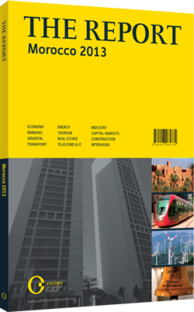OBG talks to Ahmed Squalli, President, Amisole

Interview: Ahmed Squalli
How can renewable energy be used to expand connections and support efficiency efforts?
AHMED SQUALLI: Through the rural electrification programme that was launched in the 1990s, Morocco has already developed some experience in this area, particularly in relation to photovoltaic solar panels. These panels had been installed on the basis of fee-for-service by private companies. The regions that were eligible under this programme were those that are difficult to access. Because some villages are very spread out, connecting them to the power grid is quite expensive. Given the costs, the National Office of Electricity decided that solar panels would be a cheaper solution. But this model has now reached its limits, and the programme’s objectives have largely been met. The next idea was to have miniature solar plants on people’s rooftops with a capacity between 1 KW and 25 KW that would be linked to the electricity grid. But this programme was aborted as part of a government move to prioritise the Moroccan solar programme and produce electricity on a mass scale. Presently, the country is electrified around 98%, so most people’s needs are met, though there are still needs in some places with regard to things such as water pumps and telecommunications towers. The main goals for photovoltaic energy generation will be for local or individual use, and to complement general provision through linkages with the existing grid. This will help improve energy efficiency and mitigate pressures on the systems at peak times. Together with changing habits in energy consumption, the use of solar panels can help to regulate energy consumption over the course of the day. Finally, solar energy as such is also becoming less expensive, since the price per KWh is now comparable to regular energy sources.
To what extent is the generation of renewable energy in Morocco a profitable undertaking?
SQUALLI: With respect to resources available, it is true that North African countries have ample resources in terms of wind and solar energy. Because of its location, Morocco is somewhat better placed in terms of wind energy – making this form of energy profitable in terms of the networks and technology available. The country’s objective to generate 2000 MW of wind power by 2020 will certainly be achieved ahead of time. In terms of solar energy, the south-east is well placed.
The key advantage of Morocco is its strategic orientation. It has had a bold strategy in place since 2009 with clear empirically based objectives. This also helps provide clarity to foreign investors. The programme has credibility as well because it has support from the highest echelons of government. The country’s stability compared to its neighbours in the region is another advantage. In addition, there is a liberal economic climate encouraging entrepreneurship and creating a dynamic private sector. As programmes such as Desertec and the Mediterranean solar plan are being expanded, Morocco has obtained a very favourable position.
To what extent could Morocco become an exporter of energy for neighbouring countries?
SQUALLI: To export energy is not a pipe dream –it could very well be achieved eventually. What needs to be done is to put the necessary regulations and international agreements in place. Economically it is feasible wherever resources are available, as in the case of wind energy. The other main issue is the scale of energy exports and the capacity of the current network to deliver great quantities. For Morocco, this must be dealt with over the middle and long term. However, exporting green energy could be very interesting because in Europe this is subsidised and sold at high prices. So if we could produce energy cheaper here it could become profitable to export to Europe.
Morocco is already connected with Europe by two submarine cables that could be used at some point for electricity exports, and also has connections to Algeria, giving it a role there. But the first objective remains generating enough electricity for local consumption.
You have reached the limit of premium articles you can view for free.
Choose from the options below to purchase print or digital editions of our Reports. You can also purchase a website subscription giving you unlimited access to all of our Reports online for 12 months.
If you have already purchased this Report or have a website subscription, please login to continue.

